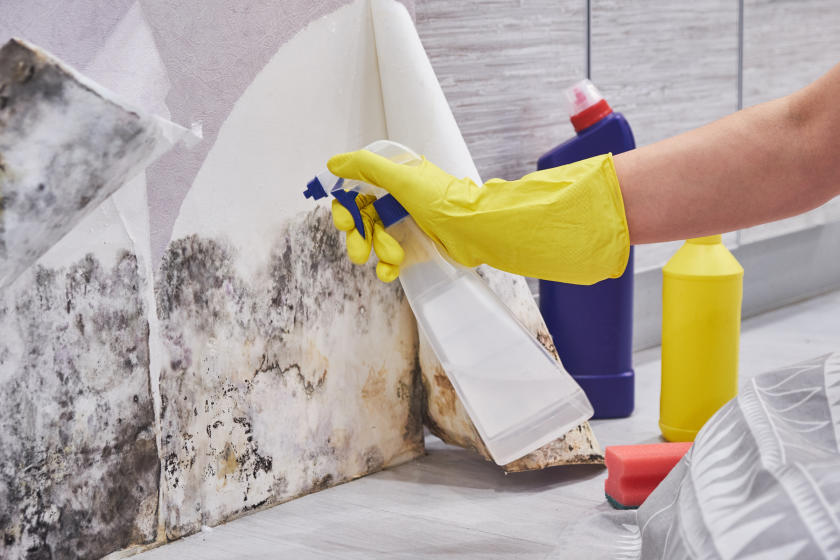How to get rid of mold on fabric
Those damp towels or gym clothes forgotten in a bag create an environment where mold can flourish if left too long. If you spot mold on these fabric items, here’s how to nix it:
- Bring the item outside and brush off the excess mold to prevent the mold spores from getting inside your home.
- If the fabric is machine washable, rub in liquid laundry detergent and wash it on the hottest setting possible according to the care instructions with chlorine bleach or non-cholorine bleach, as specified by the care instructions.
- If the fabric is not machine washable, dry cleaning or hand washing will remove the mold.

How to remove mold from wood
In areas like the kitchen, where there’s higher humidity from cooking or running the dishwasher, you may find mold on your wood cabinets if there is poor ventilation. Mold can also grow on wood furniture and paneling if it’s humid and the air circulation is low. To remove mold from wood cabinets, paneling, or furniture, follow the steps below:
- Using a vacuum with a HEPA filter , vacuum the loose spores with the soft brush attachment.
- Then, mix a few drops of dish detergent, like Dawn Platinum, with a gallon of water and use a rag to apply the solution. Wet the surface to remove the mold but do not saturate it.
- Follow-up with a cloth dipped in clear water, wring it out well, and wipe the surface dry. Don’t let the wood stay wet for too long as it could damage the finish.
How to prevent mold growth in the first place
According to the Environmental Protection Agency (EPA), “There is no practical way to eliminate all mold and mold spores in the indoor environment; the way to control indoor mold growth is to control moisture.” Even if you clean the mold, it will still come back if the room is humid and poorly ventilated or there is excess moisture from a leak, even a small one. Humidity levels should never exceed 50% to control mold growth.

That means prevention is the only permanent remedy for mold. After you’ve repaired the leaks and gotten rid of any moisture problems, moving forward, create an environment where mold can’t grow with these tips:
- Add a dehumidifier or two to your home. It’s best to keep indoor humidity levels between 30-50% to stop build-up — make sure to buy one that’s sized for the area you are treating.
- Open bathroom doors and windows or turn on the exhaust fan during and after showering to let moisture escape.
- Leave your shower curtain or liner spread open after showering to help keep it dry.
- Vent moisture generating sources, such as bathrooms and clothes dryers, to the outside.
- Avoid storing items in damp rooms, which may mean keeping linens, books, or furniture our of your basement or attic.
- Seal bathroom grout lines every year if you have tiling. This will help waterproof your walls and floors.

